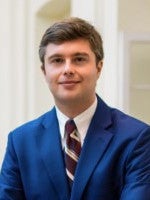We develop thermal nanocrystallization method to prepare nanomaterials consisting of nanocrystallites embedded in a glassy matrix. The application of this method to important cathode materials for lithium ion batteries (LIBs) or sodium ion batteries (NIBs), such as V2O5, LiFePO4, and Na3V2(PO4)2F3, improved electrical conductivity of those materials, up to 9 orders of magnitude, without introducing carbon additives. The maximum electrical conductivity of such materials involving 5–50 nm nanocrystallites are in the 10–2 to 7·10–1 S/cm range. This conductivity increase has been attributed to the appearance of highly disordered shells around nanocrystalline cores, which facilitate electron hopping, e.g. between aliovalent V5+ / V4+ or Fe3+ / Fe2+ centers.
I will also discuss how nanocrystallization of solid electrolytes based on Bi2O3 leads to stabilization of the δ–Bi2O3 phase. The δ–Bi2O3 phase is an excellent oxygen ion (O2–) conductor, with a record high conductivity of ca. 1 S/cm at 750 °C, but is only stable in a narrow temperature range of 730–825 °C. By thermal nanocrystallization of Bi2O3-based glasses we have succeeded to stabilize the δ–Bi2O3 phase down to RT. This result dramatically increases the application potential of these material for future solid-state electrolytes.

Dr. Tomasz Pietrzak is an assistant professor at the Faculty of Physics at Warsaw University of Technology, Poland. He received MS and PhD degrees from the same university. His scientific interests include development of new synthesis and processing routes leading to nanocrystallized glasses, i.e., materials constituted by nanocrystallites embedded in a residual glass matrix. He used this approach in the development of cathode materials for lithium and sodium batteries, stabilization of crystalline phases over temperature ranges not accessible to bulk materials, and syntheses of glassy phosphors for white LEDs. He published 30 peer reviewed journal articles, supervised over 30 BS theses, 5 MS theses and advised 3 PhD students. He is a recipient of multiple Warsaw University of Technology President Awards for Research Excellence the FIAT Award for the best PhD thesis at Warsaw University of Technology.
